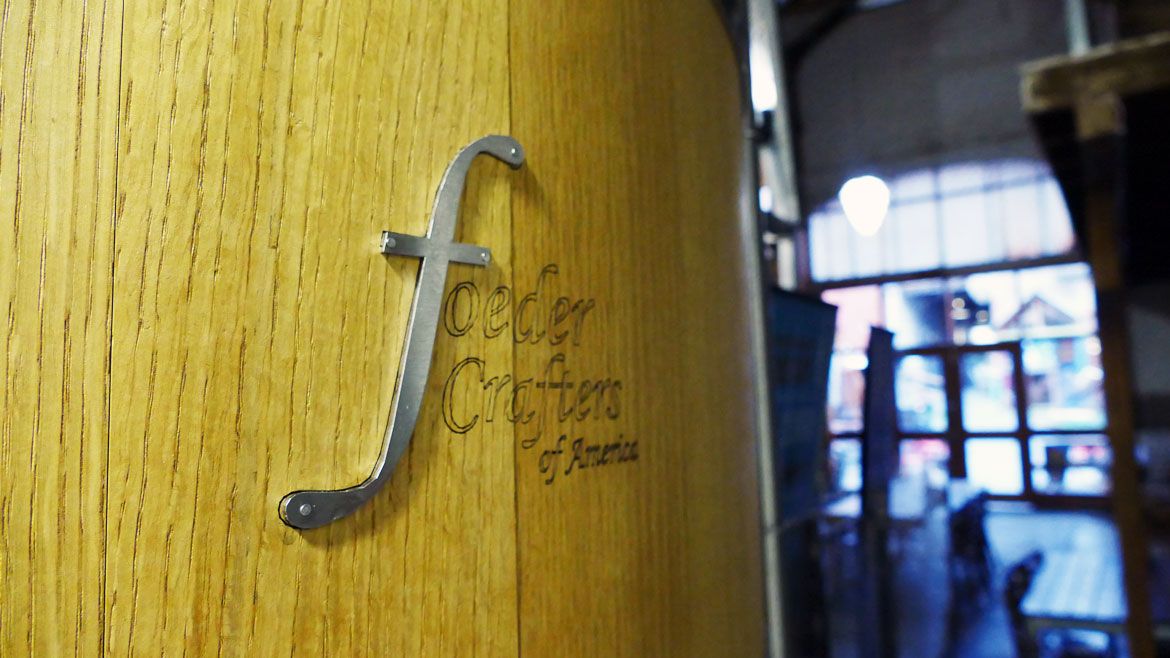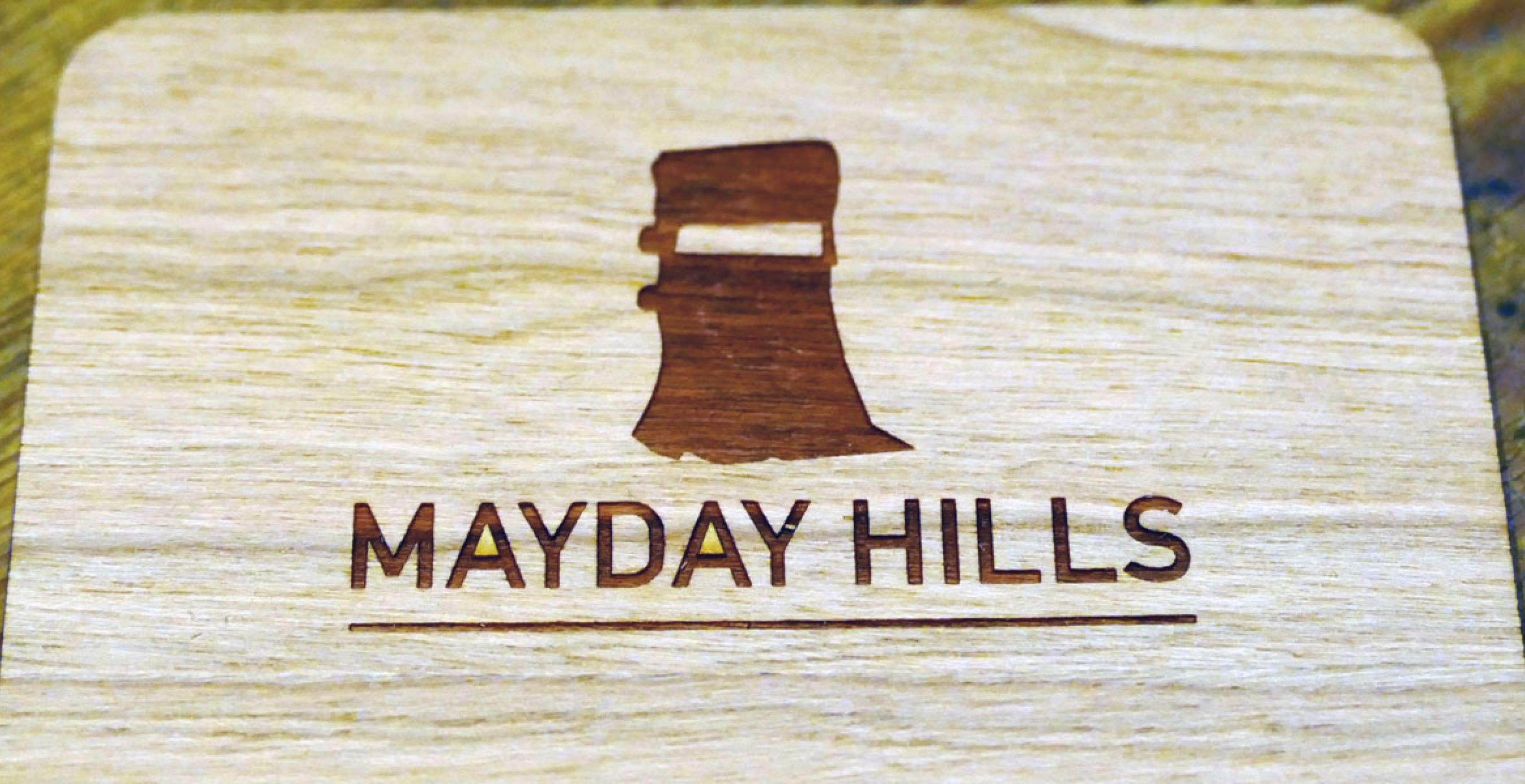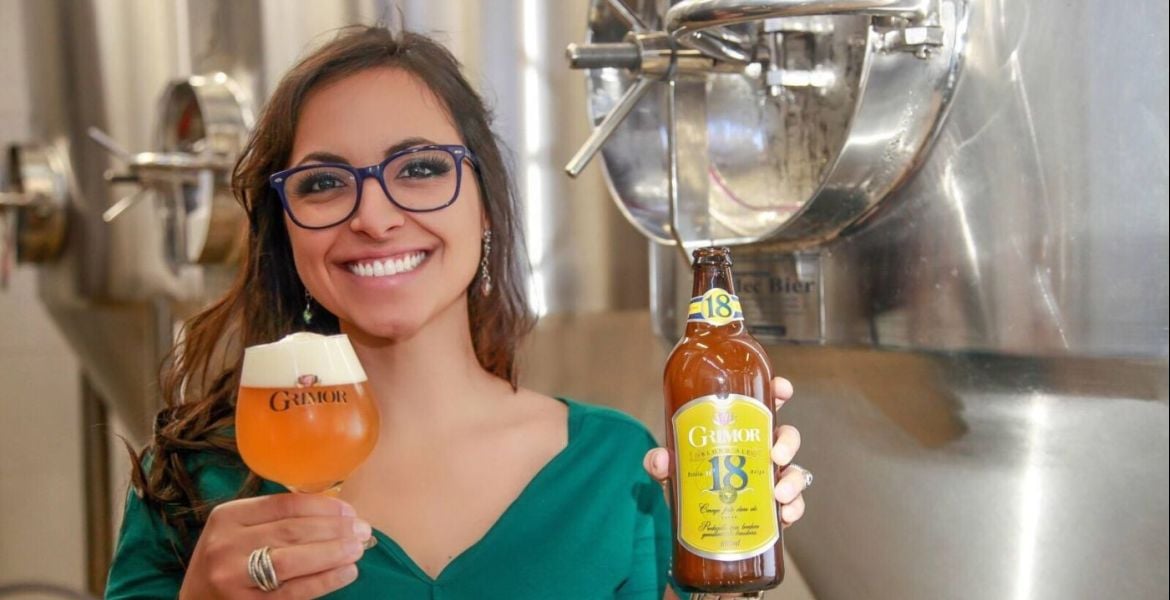Since brewing his first commercial beer in his dad’s garage more than a decade ago, Ben Kraus has always sought to link Bridge Road Brewers closely with his hometown of Beechworth. All of his brewery's beers are produced in house, while the labels (and stained glass above the doors to the original brewery – now rental accommodation) feature images of local legend Ned Kelly, whose life of crime was closely linked with the town’s gaol.
Yet, despite the brewery’s connection to the area, the international world of beer has also played its own role in shaping the brewery.
Over a decade ago, Bridge Road founder Ben Kraus left for Europe as a winemaker only to return home a brewer. More recently, a number of trips to America have helped inspire Ben to create a new range of farmhouse style beers under the new Mayday Hills label.
The first beer to be released under the Mayday Hills banner is a beer fermented with 100 percent Brettanomyces yeast. Brettanomyces (often referred to as Brett) is a genus of yeast which, in its various forms, is known for creating funky, wild and quite varied flavour and aroma characteristics. It is a key component in many Belgian styles of beer (and also, for the most part, feared by winemakers). While Bridge Road has used Brett in a number of ways in the past, typically the focus has been on using it when barrel-ageing beers, rather than the primary ferment – when hoppy wort is turned into beer by yeast.
“Seeing the use of Brett in the States, not only for secondary fermentation but also for the primary fermentation, was what really sparked my interest,” says Ben.

Ben has travelled to Belgium many times and observed how brewers use Brettanomyces there, but he quickly felt that what was happening in craft breweries across America was different to many of the techniques he had observed in Europe.
“Definitely a lot of what I saw in the States more recently was less about spontaneous fermentation and more about controlling the ferment and pitching the right rates and having a relatively clean Brettanomyces ferment,” he says.
“I saw a recurring theme of beers I liked happening in different areas I went to and the ones that were interesting for me to drink were the farmhouse beers.
“Within every region that had beer, there was Brett fermentation going on and I found a common thread in those beers that I really enjoyed. It was really about the texture and flavour profile that comes from using Brett that was the main thing that attracted me.”
Ben was so impressed by the use of Brett in the States that he bought and imported a brand new foeder made by the Foeder Crafters of America (not the first time he's been responsible for sending oak across the equator).
For the uninitiated, a foeder is a large oak barrel that stands upright, often used in winemaking as well as in the production of sour beers, most notably at Rodenbach in Belgium, where they have 294 of different sizes as well as a full time staff responsible for maintaining and repairing them. Bridge Road’s recent purchase of a foeder puts them in pretty good company; last month, New Zealand’s Garage Project announced that they would be installing five in their new Wild Workshop in Wellington.
Even though the new Mayday Hills beers could have been brewed in regular stainless steel tanks, there was a concern that this could put restraints on the new range. By having a foeder dedicated solely to the Mayday Hills beers, the brewery is able to ensure that it won’t be competing for tank space with the core range or any other seasonal beers they plan on releases. There are also inherent benefits to using wooden tanks over stainless when it comes to brewing beers with Brett.

“By using a wooden tank, Brett will find its way into the grooves, cracks and the pores of the wood and eventually it should develop into a house character,” says Ben.
“Hopefully we get some of our own more unique flavours coming out of it that are unique to our brewery and make it different to just any brewery pitching Brett into stainless.”
Due to the funky flavours that Brett is often associated with, both homebrewers and professionals often can be wary using it on their equipment. There's a worry that it could potentially infect the system and impart off flavours in the rest of their beers. However, Ben doesn’t anticipate any such problems.
“I think the real stories around Brett come from their life in oak in wineries,” he suggests. “When people talk about fears from Brett it’s based on the fact that they will live in oak and they aren’t easily removed, where they breed and house themselves in wooden barrels. But, with clean stainless and the washing regimes that we normally have, there’s no reason that the Brett should be there. “
Ridding themselves of an overzealous fear of Brett infecting other beers isn’t the only way Ben wants people to rethink the yeast; he also wants to encourage a better understanding of the flavours that it is able to produce. It is associated with "barnyard", "horse blanket" or really funky flavours, but, with several different variants available to brewers, the results can be far more diverse.
“The first batch is nearly at completion and one thing we’ve noticed that’s really strong is that it has got a big, fruity, aromatic component with pineapple and some orange flavours. One of the main differences is some of the textual things like the mouthfeel and a heavier palate weight," he says.
“Part of the idea behind the range is to challenge people’s preconceptions a little bit. While some people might enjoy the funkiness of Brett when it’s got some barnyard characters, the whole idea of this beer is to not have those characters. So hopefully we’ll get people talking about why it doesn’t it taste funky if it's 100 percent Brett.”
While the Mayday Hill beers are being released under a different brand, in keeping with the ethos of the parent brewery the beers will still be closely connected to the region. Mayday Hills heralds from the original name for the Beechworth region, as well as the town’s historic lunatic asylum.

What's more, earlier this year, the brewery updated its labels to include symbols that highlighted its own core values of independence and authenticity. And Ben believes the Mayday Hill range will be another way he is able to reinforce those values.
“We’ve always tried to work towards using local ingredients and communicate how we do everything in house.
“We are also hoping with this range to not only use local ingredients but also to get inspiration from local ingredients. So we can approach local food growers and collaborate with local winemakers – which we already do – and just try and find things locally that we can include in our beer to be a relevant story to our brewery.
“The Mayday Hills range is a way of describing that it’s from a regional area," he says, "and that it’s still Bridge Road while also being a bit different.”
The first Mayday Hills release will be a 100 percent Brettanomyces fermented pale ale called Yee-Hah! Look out for news of its arrival in the New Beers section.




















